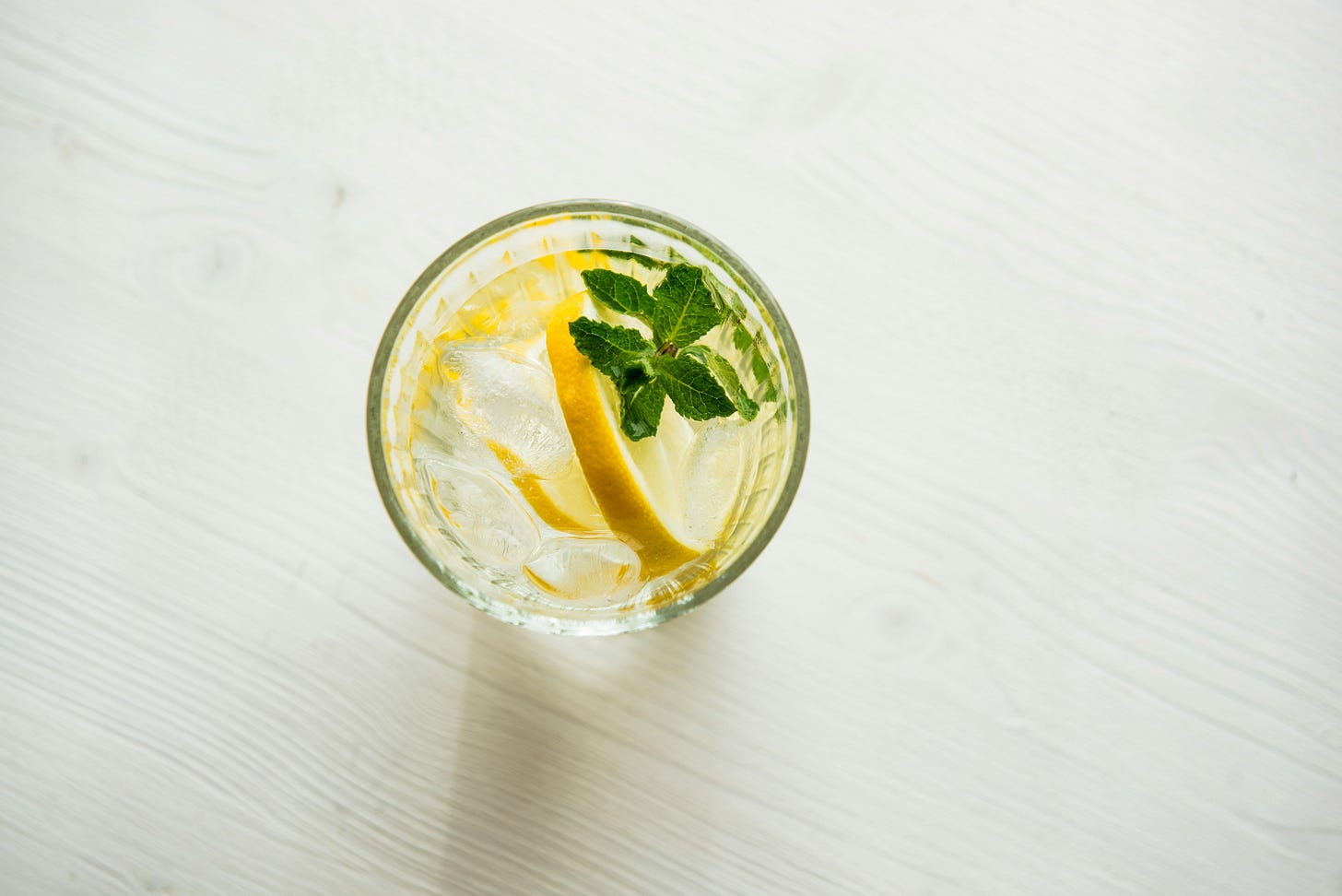Last Friday morning looked like this: 8 vials of blood taken. 100 biomarkers tested.
Three times a year, I roll up my sleeve for comprehensive bloodwork like a self-imposed personal performance review. At this point, I’ve got my blood draw down to a science — with one extra step that improved everything.
I reserve the 7-9am window so I’m fasted from the night before.
I book a phlebotomist to come to my house to stay relaxed and avoid those horrible fluorescent waiting rooms.
I slowly drink two glasses of room temperature water two hours before they arrive.
Hydration is the pro-move here.
You can’t take electrolytes, coffee or supplements before a blood test, but you can and should hydrate with water — just enough to boost your blood volume, ensure easy blood flow and prevent that woozy, post-draw feeling.
It got me thinking…
If strategic hydration can make such a difference in a 10-min blood draw, what is it doing (or not doing) during the rest of your day? Most people assume it’s just about drinking more water.
But like most things in health optimization, the real story happens on the cellular level, where proper hydration is more about function than volume.
The pipes, pumps and filters of your body’s internal “water works” determine whether the water you ingest actually reaches the cells that need it.
When this system functions optimally, you experience peak performance but when it breaks down — brain fog, poor recovery, fatigue and even accelerated aging result1.
In this post, I’m going to…
Debunk 3 common hydration myths (forget 8 glasses a day)
Explain why we need water to get inside of our cells (not just our mouths)
Recommend the most efficient ways to hydrate (not by chugging)
📥 Download my complete Hydration Optimization System with specific protocols that address minerals, movement and light. A special bonus for paid subscribers at the end!
Myth #1: You need 8 glasses of water a day
Truth: That number came from a 1945 guideline2 — but it included fluids from food, which people conveniently forgot.
✅ Adjust hydration needs by body size, diet, activity, and climate. A more useful range is 0.5–1 oz of fluid per pound of body weight daily.
❌ Don’t ignore food as hydration. Watermelon, strawberries, seaweed, bone broth = water + minerals in a bioavailable form.

Myth #2: You can’t over-hydrate — more water is always better
Truth: Over-hydration can dilute blood sodium, disturb stomach acid and flush electrolytes which causes swelling in the hands and feet, a bloated belly as well as headaches, brain fog, dizziness and muscle cramps.
✅ Hydration is about water balance, not volume. Add electrolytes and adjust based on sweat, activity, and diet.
❌ Don’t chug. Your kidneys will flush it fast. You’ll pee more, but not hydrate better.
Myth #3: If you're not thirsty, you're hydrated
Truth: Thirst is a delayed response — by the time you feel it, you could be a little dehydrated, especially in dry climates or with age.
✅ Build in proactive hydration habits. Sip mineral-rich water throughout the day, hydrate before and after activity, and eat foods that support fluid balance.
❌ Skip ice-cold drinks during meals. They constrict blood vessels & slow digestion.
💡Hydration, but make it cellular
Water = approx 50–70% of your body weight — it’s essential for every major system.
When we drink water (hopefully, filtered), it’s absorbed through your gut into your bloodstream, replenishing:
Blood plasma
Lymphatic fluid
Interstitial fluid (the space between your cells)
This is extracellular hydration — water outside your cells — and it supports circulation, nutrient delivery, waste removal and temperature regulation.
Think blood, sweat and pee.
But to get water inside of our cells — to power metabolism, energy production and detox pathways, you need more than just water.
Here’s what your body requires to hydrate at the intracellular level3:
🟡 ELECTROLYTES. You need the right balance of sodium, potassium, magnesium, and chloride. These create the osmotic gradient that pulls water into your cells. Whole foods like fruit provide them but if you are sweating or fasting — you might need to supplement.
🟡 MOVEMENT. Stimulates circulation and activates the sodium-potassium pump which helps pull water across cell membranes.
🟡 LIGHT. Sunlight (or red light) enhances mitochondrial activity and helps regulate vasopressin, which controls water retention and fluid balance.
All of these inputs — minerals, movement, light — work together to support true, functional hydration.
📥 Want My Hydration Optimization System?
These are the same protocols that I use when I wake-up, workout and fly — critical windows for rehydration and mineral replenishment. The bonus PDF guide includes:
Morning activation protocol to prime cellular hydration
Post workout rehydration for optimal recovery
Post flight reentry to combat altitude and air travel dehydration
My tested product recommendations for electrolytes and mineral supplements
Subscribe for $5/month for full access to this and future guides as well as invitations, perks and more!



